A Student Pilot Compares a Low Wing Piper Cherokee to a High Wing Cessna Skyhawk and Learns Ground Reference Maneuvers in Mountain Turbulence
[This is the sixth in a series of articles detailing my journey to earning a private pilot certificate. Click to read: Part 1, Part 2, Part 3, Part 4, Part 5.]
February 14th
On Valentine’s Day, I became acquainted with Six Six Romeo, a 1965 140-160 upgrade Piper Cherokee. It felt appropriate to fly a slinky red and black low wing plane named Romeo on the Hallmark holiday that is February 14th.
I’d never flown as a passenger in a low wing before, let alone fly one myself, so it took me about 10 walkarounds to find all of the things on the pre-flight, like the static port (which I actually never found). But I didn’t mind; admiring and running my hands over 66R in the early afternoon light of the Sierra Nevada’s was the highlight of my day!
Knowing I’d have a flight lesson in a high wing Cessna Skyhawk the following day, I made myself try and focus on the handling capabilities of the Cherokee so that I could compare them and ultimately decide which plane I’d like to continue my training in.
Cheaper Training with a New CFI vs. Expensive Training with a CFI I Really Like
Let me back up: 66R was flown out from Salt Lake City to become the first plane of a flying club and flight school I’ve looked into joining. All things considered, continuing my training in the Cherokee at the new flight school would be significantly cheaper, but it’ll be based in Minden, NV, about a 30-45 minute drive from my house. I’m not too worried about the distance – I just really like my flight instructor, Dave, who’s based out of Truckee, CA, only 20 minutes from my house.
The added benefits of keeping Dave as my instructor, other than his awesome teaching style and great personality, is that he does most of the check rides and examinations in the surrounding area, has aerobatic and backcountry experience, two things I’m very interested in. That to me means that he can better prepare me for the written and practical exams, as well as cater my lessons toward things like soft field landings and spin recovery.
Flying to Minden in the Low Wing Cherokee
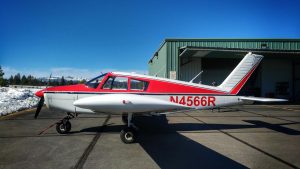
Alright, back to yesterday. I was asked if I wanted to fly out to Minden with my boss, Bryan (co-founder of Disciples of Flight) to meet with the CFI’s he would hire to work at his new flight school and show off the Cherokee for the flying club. Always eager and excited to fly anything, anywhere, for any purpose, I jumped at the chance to test out a seemingly foreign type of aircraft.
We climbed in over the wing, which was admittedly awesome, situated ourselves in the seats, chatted about the beautiful interior, and began the process of discovering the many differences between 66R and the Cessna’s we were both accustomed to flying. The biggest difference was finding out that there were no toe brakes! Instead, there’s an unwieldy lever underneath the panel way over to the left, so when taxiing you have to steer with your feet and brake with your hand, which was harder to do (and look out the window) than I hoped.
After completing the run up, (which was to be done at 2,000 RPM, not 1,700 like the C-172, among other variations) we went through CIGAR and encountered a great many quirks, probably specific to 66R. The yoke pulled out all the way to our belly buttons and moved around in its socket. The seat belts had no shoulder harnesses, and because of the different style of gauge, we both spent a good 10 minutes trying to figure out why the ammeter was apparently discharging at an alarming rate (it wasn’t; the zero was at the far left, instead of the center of the gauge, and neither of us can apparently read).
Rescuing an Indian: Restoring a Piper Cherokee
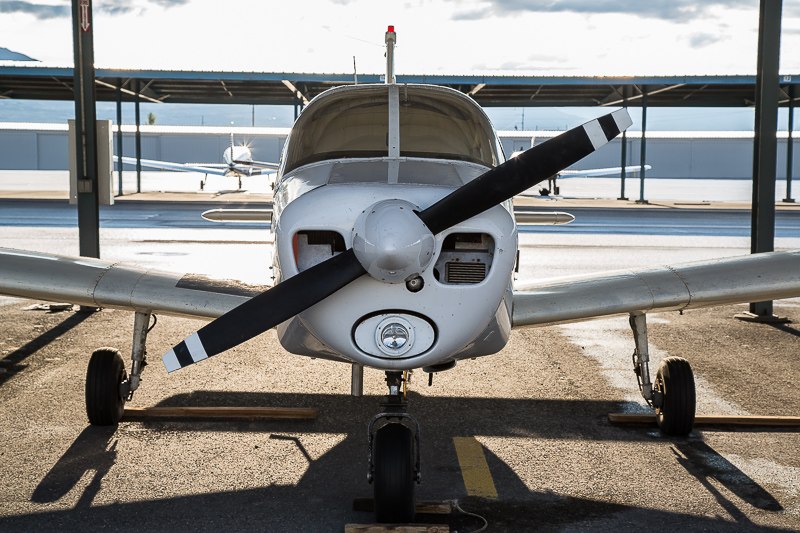
A few weeks ago a new client came to the shop. He was looking for some advice and help in purchasing an airplane. He currently owned a Piper Cherokee 140 that he had purchased a few years ago and had learned to fly in. When the annual was due earlier this year he took it into a local repair station and it was found not airworthy for a number of reasons. The estimate for the shop to get the airplane signed off was over $10,000. Rather than spend all that money to fix the Piper Cherokee, [Click to read more…]
Taking Off in A Low Wing
Eventually, we figured everything out enough that we felt comfortable embarking on our 25-minute flight. From the minute we picked up speed on the runway, I began to doubt our ability to fly this alien thing. We lifted off before we had picked up enough speed, floating over the runway for a couple seconds before touching back down. Bryan twisted mysterious knobs and screwed the trim… corkscrew thingie on the ceiling, held her steady, and we successfully took off.
Of course, being based out of Truckee, our climb was immediately greeted by those omnipresent afternoon winds which bounced us around a little. Having very little experience flying, I thought maybe it was the airplane having a fit, but kept a cool head and let Bryan do his thing. He got us up to a safe altitude (even+500 because we were going southwest) and gave me the controls. After five or so minutes of serious self-doubt, I realized that I was able to fly 66R fairly easily (compared to how I thought it’d go) and that I missed flying with steam gauges. It’s so much less overwhelming than the glass panel in 68F, my current trainer.
Admiring the Cherokee’s Grace
Flying through the passage into Carson Valley, I watched with wonder as the world opened up before us like a huge brown patchwork blanket. An airport not surrounded by mountains and 50-foot trees? How strange!
Before we entered the pattern and started our descent into MEV, Bryan had me do some S-turns to get a better feel for 66R. I was elated to find that the low wing airplane was unbelievably cooperative and seemed to want to turn with me. It felt more like dancing than anything I’d experienced in the Skyhawk. I wanted to just continue turning in circles, but we had a meeting to attend, and I was soon being directed, step by step, into the pattern.
Bryan handled everything after we turned base (as well as all radio calls and trim corkscrewing and flap-bar-pulling the whole time), and plopped down on the left tire before clunking onto the runway. Regardless, we made it!
Second Takeoff in the Low Wing Cherokee
I won’t bore you with the details of the meeting, but it went well, and we were soon removing the tie-downs and getting ready to take to the skies. We switched fuel tanks (there’s no “fuel selector on both” in the Piper Cherokee), ran through the checklists and run up with a great deal more confidence the second time. Likewise, the takeoff from Minden went smoothly, the climb-out was exhilarating, and we headed back toward the mountains.
Bryan gave me control of the airplane, and after directing us toward the mountain pass we wanted to fly through, I expressed concern that we weren’t high enough. Though he responded in a way that made it clear we were high enough, Bryan encouraged me to do some ascending turns to gain enough altitude to make me feel comfortable.
Initially, I raised my eyebrows at the suggestion, as I had never done one of those maneuvers before and it was a new airplane. But I set my jaw and rolled us into a turn, adding power and pulling back to help us get above the treetops. As I experienced during the S-turns on our arrival into Minden, 66R seemed to love turning, and it felt natural, as well as super freakin’ fun to carve a wide arc through the sky.
The flight back was significantly smoother and more relaxed as we both enjoyed getting to know the Cherokee and admiring the beautiful Lake Tahoe Basin. On the way into the Truckee airport, we were re-acquainted with our friend, the mountain winds. Bryan handled the whole landing, which was a great deal more graceful than our landing at Minden.
Once we were taxing back to Mike row, Bryan mentioned that Corey Hoddenbach, half of the father/son aircraft mechanic team that took care of and delivered 66R to Truckee warned him that landing the low wing Piper Cherokee won’t feel as smooth as “the worst landing in your C182.” On that last landing, Bryan implemented some of the advice Corey had given him for achieving the best landing possible, and we could definitely feel a difference.
Rescuing an Indian Part 2: Finishing the Cherokee Restoration Work

The last few months have been very busy in my shop. A lot of high-pressure jobs have absorbed more of my time than normal, stealing away that precious time I could be working on my own projects. Progress on the old Cherokee 140 I wrote about a few months ago slowed to a painful pace and became frustrating because my expectations to do the work quickly weren’t working out. I had hoped I would be finished within a couple months. One thing I know about aircraft maintenance [Click to read more…]
February 15
I woke up refusing to look out the window, afraid I’d see weather that would end up canceling my flight lesson, or worse, result in a ground school lesson. I held on to the hope that the weather would cooperate until I hopped in my car and headed into the office, glaring at the heavy clouds the whole way there.
My morning at work was spent anticipating a text from my flight instructor, Dave, saying “Sorry Carly, looks like we won’t be flying today.” Luckily, the text never came, and at 11:30 am sharp, I hopped in my car (now complete with rear windshield!) and zipped over to the airport, watching the gray sky and the treetops tossing about in the wind with both fingers and toes crossed.
As I arrived at the airport, I noticed I’d gotten a text from Dave after all. My stomach sank as I opened my messaging app.
“Carly- plane parked at terminal by fuel. Do your preflight there”
I’m not ashamed to say I punched my fist in the air and let out a gleeful, “Yessss!” I grabbed my loaner headset (thanks, Bryan!) and flight bag, and power-walked over to the blue and gold C-172, 68F, bouncing in the wind, parked on the tarmac.
My Second Solo Pre-Flight Check
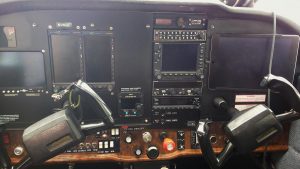 I tossed my stuff in the back seat, brought the glass panel to life to check the indicated fuel levels, then hopped out and completed the pre-flight checklist. Everything looked beautiful, but I noticed the oil looked low. The cowl was really warm to the touch, so I remembered learning that after a flight, the oil gets all sucked up into the engine and would report a lower oil level.
I tossed my stuff in the back seat, brought the glass panel to life to check the indicated fuel levels, then hopped out and completed the pre-flight checklist. Everything looked beautiful, but I noticed the oil looked low. The cowl was really warm to the touch, so I remembered learning that after a flight, the oil gets all sucked up into the engine and would report a lower oil level.
Since Dave hadn’t yet strolled up, I climbed into the cockpit and looked up the KTRK METAR, comparing the weather I saw to the report I read. The last week I spent focusing on weather reports, and I’ve since become intimately familiar with METARs, as well as the phonetic alphabet. After that, I started reading the laminated sheet which listed emergency procedures and V-speeds and whatnot. I felt a little uneasy as the wings jumped and shivered against the wind, and again I began to fear the lesson might be canceled.
Eventually, some movement out of my peripheral pulled my nose away from the emergency procedure checklist and I waved to Dave and hopped out of the cockpit. We discussed the engine oil level, and like I’d guessed, Dave had just flown and told me not to worry about the apparently low oil levels. He asked, “So, do you have any questions before we get going?”
Preparing for Takeoff in the High Wing Skyhawk
I thought for a second before replying, “Yeah… what can you do about turbulence?” He laughed and motioned for us to climb inside the Skyhawk to continue our chat without being battered by the wind. After a short lesson on flying in mild-moderate turbulence, from which I gather that you can’t do all that much except for roll with the punches and keep yourself from yanking on the yoke, we got 68F ready to roll, and we taxied to runway 2-0, which was most aligned into the wind.
I was pretty stoked on the toe brakes, compared to the lever in the Cherokee, but I felt like the wind was pushing us around much more in the high wing Skyhawk than it did the day before. After completing our run up, I guided 68F to the center line, and we powered up and started hurtling into the wind.
As we started picking up speed and rapidly approaching 55kts, at which time I knew I’d have to pull up and get us off the ground, I was shocked at how much right rudder I needed to hold us on the runway, let alone anywhere near the center line. Taking off in the Cherokee seemed effortless comparatively!
I wasn’t doing a very good job managing the rudder, and we were headed off to the left in a hurry. Luckily, before we reached any sort of danger zone, we hit take off speed and pulled off the runway at an awkward angle to the left. Yikes. That didn’t feel good.
I let myself get into my head, and Dave had to remind me to put some forward pressure on the yoke so we could gain enough airspeed to climb out of the bowl-shaped mountain range surrounding the airport. Once I felt more comfortable guiding the airplane up and out, Dave directed me to make a 180-degree turn and fly to the north, over Stampede Reservoir, for some maneuvering. Our goal for the lesson was to make some turns around a point.
Learning to Love the Wind… Or Not
As we climbed over the smaller peaks, the wind hit us really hard. Up, down, one wing up, the other down, repeat, repeat, repeat. “Just try and maintain an altitude,” Dave instructed, complimenting me on keeping my hands steady on the yoke. I came clean and told him it was taking a lot of focus to not try and wrestle the wind by yanking us around, which I knew would be pointless, but still, the back of my mind was telling me I had to do something.
A quote from an awesome movie I recently watched popped into my head as we rose and fell and rolled- “I am a leaf on the wind… Watch how I soar.”
Except it didn’t feel like soaring, it felt a lot like giving up.
“I don’t like this,” I admitted to Dave. He laughed and told me this is pretty standard for Truckee, which immediately made me feel like a little wimp. Fine, I thought, I’m going to learn to love the wind by the end of this lesson. Anywhere I fly after this will be a lot easier. My thoughts drifted to the calm breezes we experienced in Minden yesterday, and how nice it’d be to learn to fly there. I physically shook the thought out of my head, squared my shoulders, and set my mind toward unclenching all the muscles in my legs and relaxing my grip on the yoke.
On our short flight to Stampede, Dave had me work on finding and holding altitudes using the “Pitch, power, trim” routine, which was challenging enough in the wind that I stopped worrying so much and let myself enjoy focusing on a particular task.
Mountain Wave: My Scariest Flight Ever
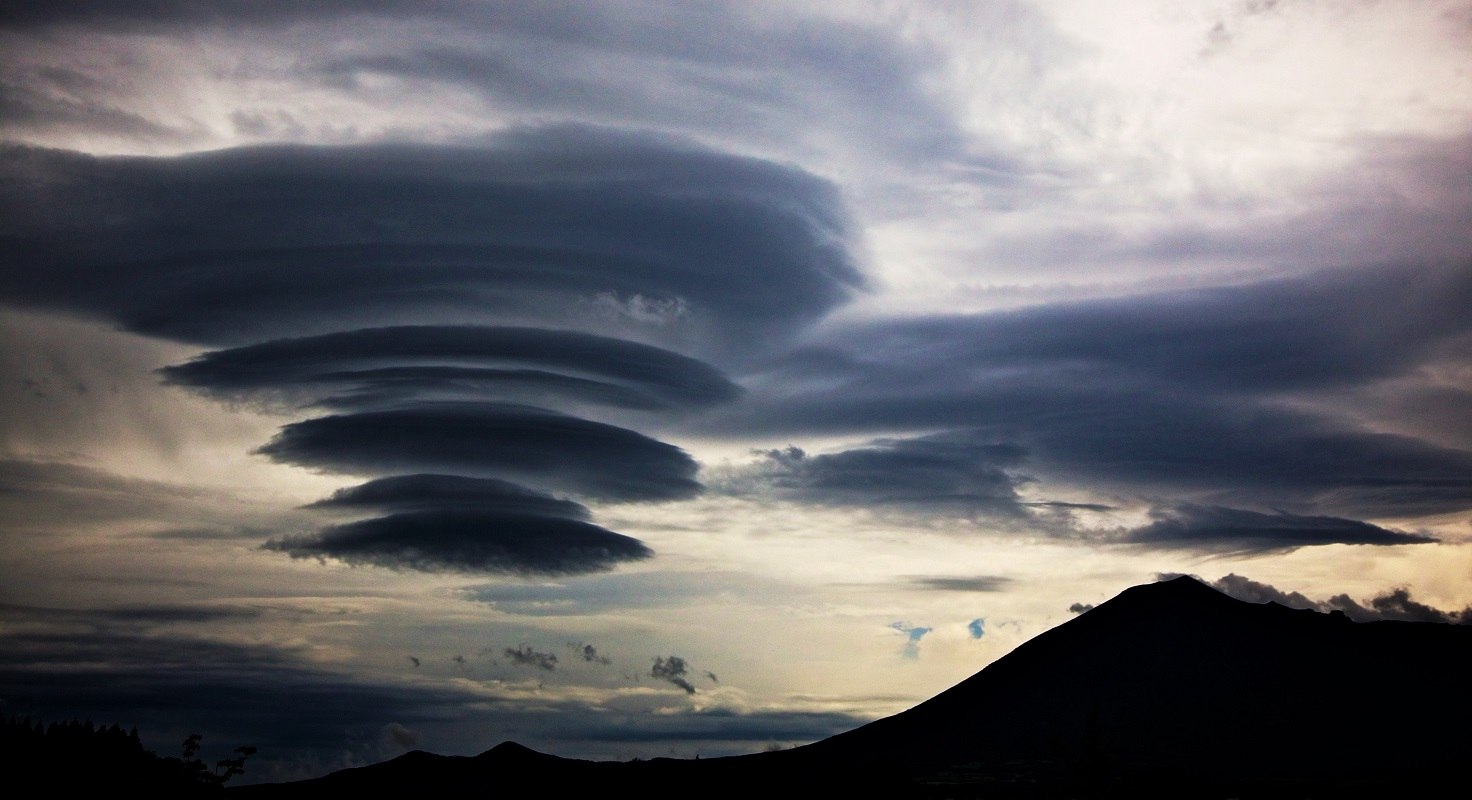 …We approached the eastern edge of the mountains, where the terrain drops almost straight down to the Owens Valley. This is one of the steepest and deepest drop-offs in the continental U.S. Just as we approached the edge the GPS showed our groundspeed increase rapidly from 175 to 228 knots. A moment later the plane crossed the ridge and suddenly everything went wild. The first smack knocked our headphones off and our heads into the ceiling despite seat belts [Click to read more…]
…We approached the eastern edge of the mountains, where the terrain drops almost straight down to the Owens Valley. This is one of the steepest and deepest drop-offs in the continental U.S. Just as we approached the edge the GPS showed our groundspeed increase rapidly from 175 to 228 knots. A moment later the plane crossed the ridge and suddenly everything went wild. The first smack knocked our headphones off and our heads into the ceiling despite seat belts [Click to read more…]
Attempting Turns Around a Point
When we reached Stampede, which, this time of year, is a frozen lake covered with massive cracks and a layer of snow, Dave had me bring us down to 7,000 MSL, which is just about 1,000 AGL. In the middle of the flat lake there were a couple small “islands,” one of which had a fat little tree we decided to use as a reference point for our turns around a point.
Dave took the controls to demonstrate the changes in bank angle I’d need to make around the circle to maintain a uniform distance from the tree, and after two 360 degree turns, it was my turn. The first go-around was… less than perfect. I was too aggressive with my bank angle when I ought to have kept her more level to counteract the wind, so our circle turned into a mutated-egg-shape. I looked at Dave and grimaced. He shrugged, and I went around again. “Less bank, less bank…” he coached, and once we arrived at our starting point, I said, “How’s that?”
“Better. I would say that was at least a 100% improvement from your first try.”
Wow! I thought. “Thanks, Dave!” I didn’t necessarily agree, so I was already starting to go around again. We did a few more turns, and by my last turn, I would have been happy to do that for the rest of the day. I focused more on judging my bank angle against the horizon, and looked less at the busy glass panel. The steepest bank on the last turn elicited a “Weeee!” from me, and without looking, I could imagine Dave trying not to smile behind his cool-guy sunglasses. (Or maybe he was rolling his eyes? I’m still getting to know him, but I like to think it was the former.)
“How do you feel about landing at Stead and calling it a day?” Dave asked, poking at ForeFlight on the iPad on the right side of the cockpit. “Sounds great!” I paused. “…Which way is that?”
My First Radio Calls
He pointed at a pass between the mountains that shouldered the line between our airspace and Reno International Airport’s Class C airspace. He adjusted the radio, and we listened to Stead’s weather, and I picked a runway. Once we were 10 miles out, Dave told me to make the radio call. “Yeah, sure!” Another pause. I’d never made a radio call, really, but I obviously wasn’t going to turn down the opportunity to learn something new. “Uh, what do you want me to say?”
Dave ran me through the radio call, which I then made and felt pretty good about for half a second before I realized I forgot to tell them our altitude. Over the next few miles, Dave talked me through their landing pattern, which was a right-traffic pattern for the runway we decided to land on. By the time we hit five miles out, it was time for me to redeem myself on the radio call.
“Stead Traffic, Skyhawk 68F 5 miles south at 8200, inbound for landing on runway 2-6, Stead Traffic.”
I felt like such a badass. It was short-lived, but I reveled in every second of it.
My First Touch-and-Go’s at a New Airport
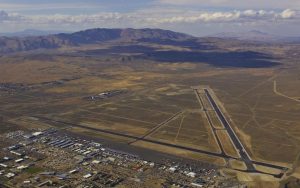
As we entered the valley and descended to their traffic pattern altitude (which I believe was 6,000’?), Dave talked me through adding/reducing power at specific times and adding the flaps. Once we were in the pattern, Dave handled the radio calls, but for the first time I did all the flaps, trim, carb heat, all that cool stuff!
We descended onto the runway, made contact, and Dave had me hold 68F on the center line while he cleaned her up and we lifted back off. We stayed in the traffic pattern and went around for another touch-and-go. Again, Dave handled the radio calls and I did everything else (so excited!), and after we landed, he had me remove the flaps, power up, and take off, and head back home to Truckee.
I was feeling seriously awesome, but still not too pleased with my rudder handling abilities at high power settings. On the flight back, Dave and I talked about mountain downdrafts and wind patterns specific to our location, and I nailed the 10 mile out call to Truckee Traffic, then did the pre-landing checklist. The five mile out call was another story.
I started on the right foot, “Truckee Traffic, Skyhawk 68F 5 miles north inbound-” pause, as I realized I was forgetting the altitude again, laughed at myself, and stumbled over the rest of the call: “Uh, 5 miles north at 8400, inbound for landing, Truckee Traffic.” I laughed again as I realized I forgot to say which runway, then said, “Shit.”
That was when I realized I’d been holding the button the whole time. Despite the cold air circulating through the cockpit, my cheeks felt like they were on fire as I blushed and apologized to Dave, shaking my head and making a face.
Hello Again, Truckee Traffic!
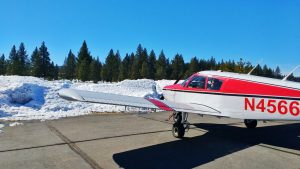
We started putting the Skyhawk into landing configuration, and Dave handled the turning-base and turning-short-final calls. As the ground came up to meet us, I glued my eyes down the runway (I’ve been listening to informative podcasts!) and let her float to the ground before adding back pressure. The few seconds between flaring and touching down felt like an eternity, as I nervously waited for a clumsy landing to add to my embarrassment. Luckily, it went pretty well! Dave would tell me later that I did 75% of the landing, which makes sense as to why it went so well. I figure the last 25% must be pretty important.
After we completely crossed the hold short line, Dave had me make the radio call letting Truckee Traffic know we were clear of runway 2-9 and taxiing to Bravo row. I felt pretty solid sticking to the center line until we pulled up at the hangar when Dave had to take over to do that super sharp turn that positioned the plane to be put into the hangar. “You gotta use the brakes when you’re making sharp turns,” he instructed as we shut down 68F and he climbed out. I filled out the time sheet, locked 1.6 hours into my mind so we could fill out my logbook later, and managed to successfully use the motorized tug to push 68F into the hangar (for the first time with some small amount of confidence!).
Hangar and Homework
Dave and I walked over to the office to fill out my logbook, and I was feeling pretty excited about the lesson, so I asked him, “What, specifically, can I work on for flying?”
To my dismay, he laughed a bit and said, “There’s a lot.” I could feel the wet blanket dampen my mood, but I did my best to shake it off. I still got to fly, and I had fun!
We chatted a bit longer, and I jotted down my homework to be completed before my lesson, just six days away: memorize the variety of non-standard landing patterns for Truckee (and couch-fly them), memorize the emergency procedures and V-speeds for 68F, and listen to LiveATC.net. I took a deep breath, shoved my notebook into my flight bag, and headed toward my car, already looking forward to my next lesson.
Final Thoughts on Comparing the Two Planes and Switching Schools
After giving myself a little bit of time to let the post-flight euphoria wear off so I could think objectively about taking flight lessons in the low wing Cherokee in Minden, versus continuing flight lessons with Dave in the high wing Skyhawk, I came to the exciting realization that I could do both! Splitting time between the two planes, two airports, and multiple instructors (there are three different CFI’s at Minden) would save me a serious amount of money and give me a more well-rounded education. Also, on a purely selfish note, I could fly more often by taking lessons in Minden whenever the weather on the mountain eliminates flying out of Truckee!
Brilliant. In a week or so, I’ll schedule some lessons with one of the instructors at MEV, and get this party started! Until then, I think my homework will keep me more than busy enough.
Tricycles versus Taildraggers
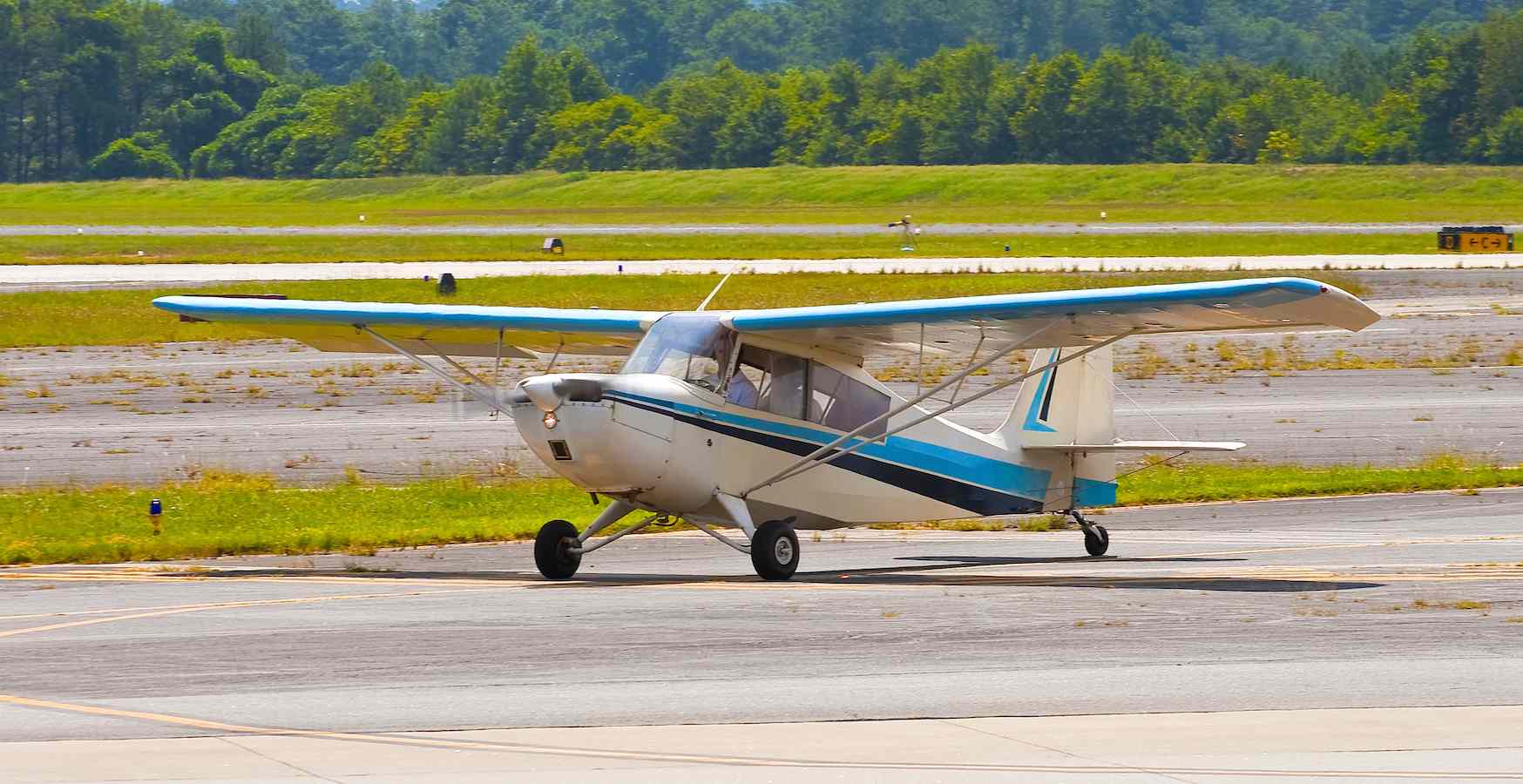 After learning to fly and exploring Utah for five years in a little tricycle-wheeled putt-putt Piper Cherokee, this year I decided to expand my skills and capabilities with a back-country worthy taildragger. There was lots of ominous hangar talk (“you will ground loop this plane”) as well as the FAA’s requirement that you not merely land the plane three times in three months but bring it to a full stop if you want to carry passengers. [Click to read more…]
After learning to fly and exploring Utah for five years in a little tricycle-wheeled putt-putt Piper Cherokee, this year I decided to expand my skills and capabilities with a back-country worthy taildragger. There was lots of ominous hangar talk (“you will ground loop this plane”) as well as the FAA’s requirement that you not merely land the plane three times in three months but bring it to a full stop if you want to carry passengers. [Click to read more…]







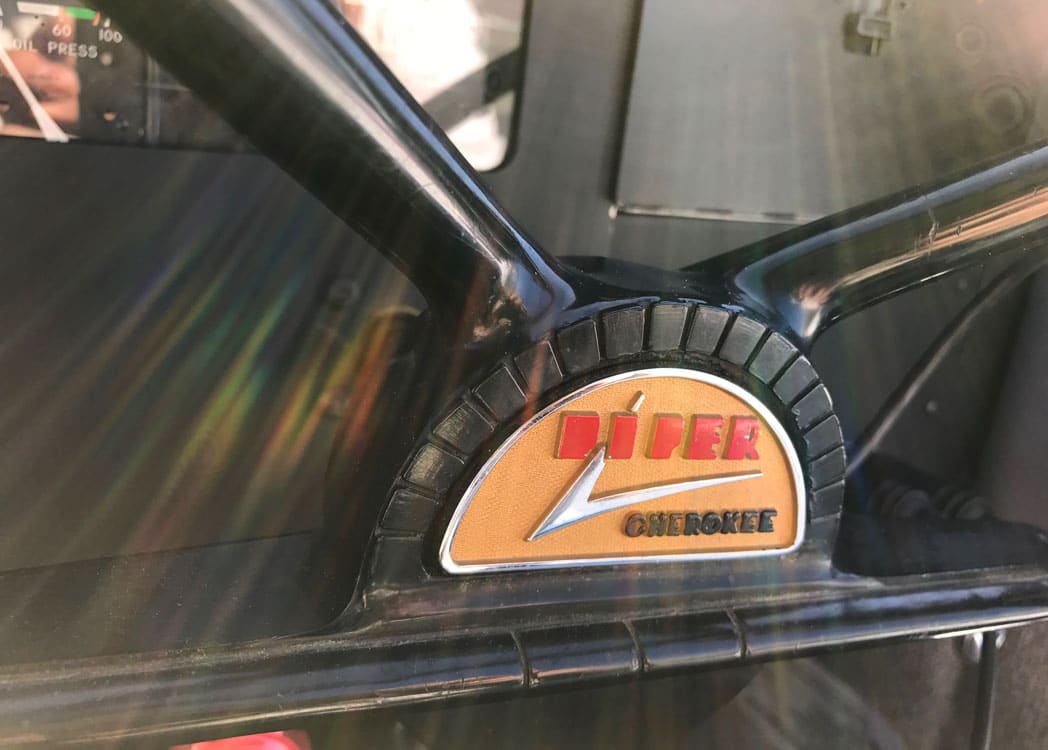



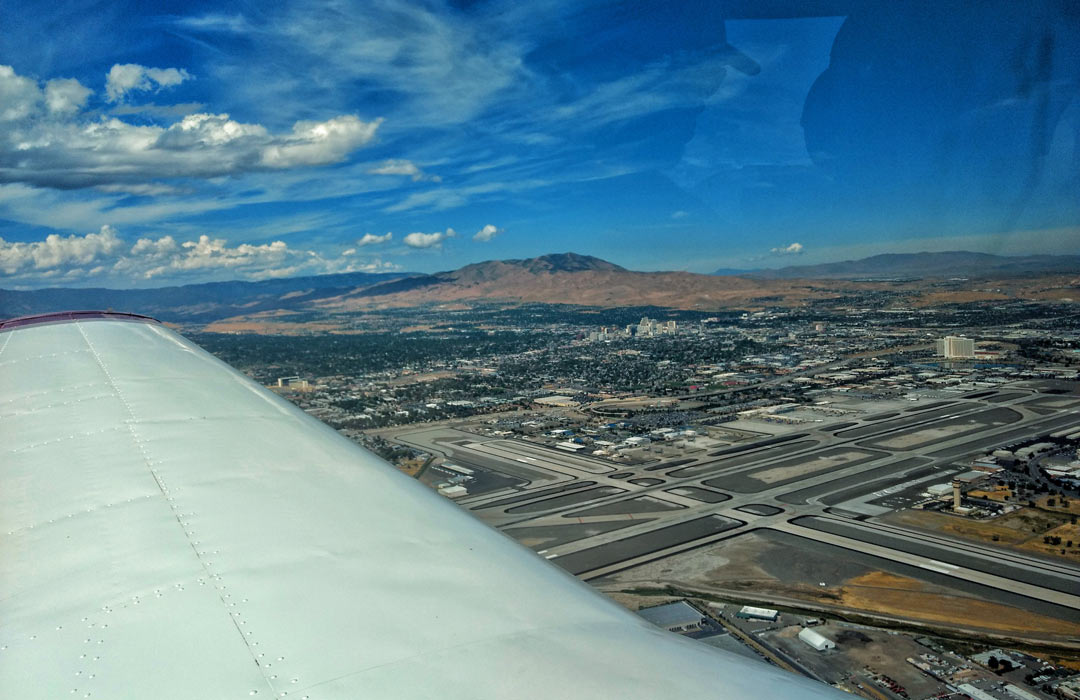



Leave a Reply